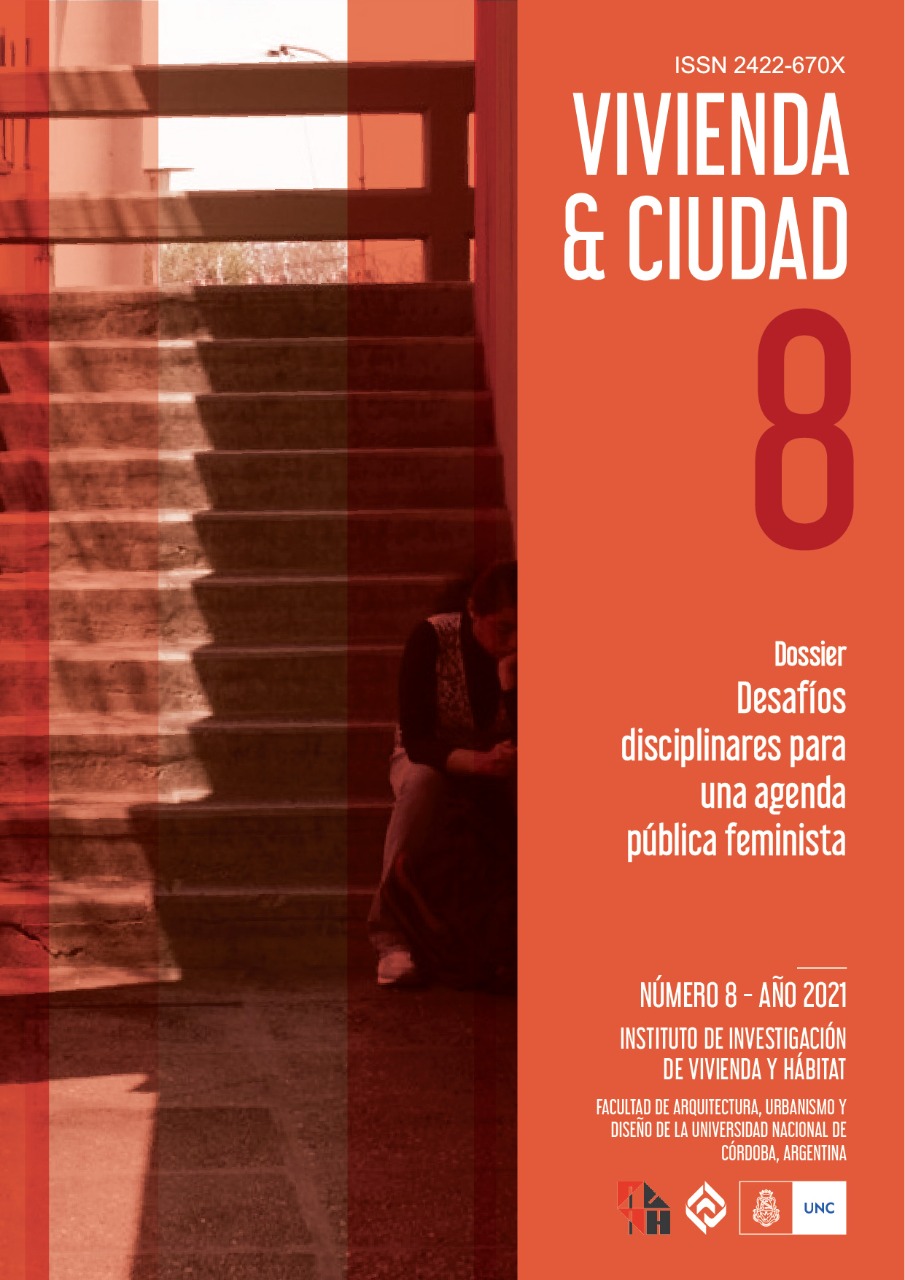Proposal for the mass appraisal of urban land.
Spatial application of the Quantile Regression Forest algorithm.
Keywords:
urban land value, mass appraisal, machine learning, quantile regression forestAbstract
Knowledge and monitoring land values are necessary for the implementation of public policies and territorial management, as well as a genuine source of resources for local governments. However, the different territorial characteristics and dynamics demand adequate processes and techniques for each reality. This paper describes the techniques and results obtained for the massive valuation of land in the province of Córdoba, particularly in mountain localities with a tourist profile. The performance of the Quantile Regression Forest machine learning technique is analyzed in terms of the level of accuracy in predicting land value and the resulting value structures are presented. In addition, the main innovation of the proposed technique consists in the possibility of generating a map of the prediction consistency, in terms of the dispersion coefficient at each point of the space. This last feature is considered a key input in the implementation of public policies for the periodic updating of urban land tax values, by informing about possible areas of the city where the results are of higher or lower quality in relation to the surroundings.
Downloads
References
Amat Rodrigo, J. (2020). Regresión cuantílica: Quantile regression forest. https://www.cienciadedatos.net/documentos/53_regresion_cuantilica_quantile_regresion_forest.html.
Anselin, L. (1995). Local indicators of spatial association—LISA. Geographical analysis, 27(2), 93-115.
Bezdek, J. C., Ehrlich, R., & Full, W. (1984). FCM: The fuzzy c-means clustering algorithm. Computers & Geosciences, 10(2-3), 191-203.
Bonet, J. A., Muñoz, A., Mannheim, C. R. P., & Torres, F. S. (2014). El potencial oculto: Factores determinantes y oportunidades del impuesto a la propiedad inmobiliaria en América Latina. Banco Interamericano de Desarrollo.
Breiman, L., Friedman, J., Stone, C., and Olshen, R. (1984). Classification and Regression Trees. CRC press.https://doi.org/10.1201/9781315139470
Breiman, L. (1996). Bagging predictors. Machine Learning, 24(2), 123–140. ttps://doi.org/10.1007/BF00058655
Breiman, L. (2001). Random forests. Machine learning, 45(1), 5–32. https://doi.org/10.1023/A:1010933404324
Bullano, M. E., Carranza, J. P., Piumetto M. A., Cerino R. M., Monzani F., & Córdoba M. A. (2020). El impacto de las variaciones del tipo de cambio sobre el valor de la tierra urbana. ¿El mercado inmobiliario está totalmente dolarizado? Asociación Argentina de Economía Política. Reunión Anual 2020. https://aaep.org.ar/anales/works/works2020/Bullano.pdf
Carranza, J. P., Piumetto, M., Salomón, M., Monzani, F., Montenegro, G., & Córdoba, M. (2019). Valuación masiva de la tierra urbana mediante inteligencia artificial: El caso de la ciudad de San Francisco, Córdoba, Argentina. Revista Vivienda y Ciudad, (6), 90–112. https://revistas.unc.edu.ar/index.php/ReViyCi/article/view/27090/28749
Cerino R. M., Carranza, J. P., Piumetto M. A., Bullano, M. E., Monzani F., y Córdoba M. A. (2020). Homogeneización de valores de la tierra mediante técnicas de econometría espacial en valuaciones masivas automatizadas. Congreso de Catastro Multifinalitario y Gestión Territorial. Florianópolis, Brasil.
Cervio, A. L. (2015). Expansión urbana y segregación socio-espacial en la ciudad de Córdoba (Argentina) durante los años ‘80. Astrolabio (14), 360–392. https://revistas.unc.edu.ar/index.php/astrolabio/article/view/10610
De Cesare, C. M. (2012). Improving the performance of the property tax in Latin America. Cambridge, MA: Lincoln Institute of Land Policy.
Eguino, H. y Erba, D. (Eds.). (2020). Catastro, valoración inmobiliaria y tributación municipal. https://publications.iadb.org/es/catastro-valoracion-inmobiliaria-y-tributacion-municipal-experiencias-para-mejorar-su-articulacion
Hastie, T., Tibshirani, R., & Friedman, J. (2009). The elements of statistical learning: data mining, inference, and prediction. Springer Science & Business Media.
Hengl, T., Nussbaum, M., Wright, M.N., Heuvelink, G.B.M., Gräler, B., 2018. Random forest as a generic framework for predictive modeling of spatial and spatio-temporal variables. PeerJ 6, e5518. https://doi.org/10.7717/peerj.5518
Marshall, A. (1890). Principles of economics Macmillan. London (8th ed. Published in 1920).
Meinshausen, N. (2006). Quantile regression forests. Journal of Machine Learning Research, 7(Jun), 983–999.https://www.jmlr.org/papers/volume7/meinshausen06a/meinshausen06a.pdf
Morales Schechinger, C. (2007). Algunas reflexiones sobre el mercado de suelo urbano. https://es.scribd.com/document/255875677/Algunas-Reflexiones-Sobre-El-Mercado-de-Suelo-Urbano-Carlos-Morales-2007
Porras Garrido, A. (2016). What is the difference between bagging and boosting? QuantDare, Madrid, Spain. https://quantdare.com/what-is-the-difference-between-bagging-and-boosting/
Reese, E. (2003). Instrumentos de gestión urbana, fortalecimiento del rol del municipio y desarrollo con equidad. Lincoln Institute of Land Policy. https://www.academia.edu/1226364/Instrumentos_de_gesti%C3%B3n_urbana_fortalecimiento_del_rol_del_municipio_y_desarrollo_con_equidad
Sabatini, F. (2003). La segregación social del espacio en las ciudades de América Latina. Serie Azul, 35 (2003), 59–70. https://publications.iadb.org/publications/spanish/document/La-segregaci%C3%B3n-social-del-espacio-en-las-ciudades-de-Am%C3%A9rica-Latina.pdf
Smolka, M., & Mullahy, L. (Eds.). (2010). Perspectivas urbanas: Temas críticos en políticas de suelo en América Latina. Lincoln Institute of Land Policy. https://www.lincolninst.edu/sites/default/files/pubfiles/perspectivas-urbanas-cd-full.pdf
Published
How to Cite
Issue
Section
License
Copyright (c) 2021 Rocío Mariel Cerino, Juan Pablo Carranza, Mario Andrés Piumetto, María Emilia Bullano, Vania Caffaratti Donalisio, Federico Monzani

This work is licensed under a Creative Commons Attribution-ShareAlike 4.0 International License.
Authors who publish in this journal agree to the following terms:
a. Authors retain copyright and guarantee to the journal the right to be the first publication of the work as well as licensed under a Creative Commons Attribution-ShareAlike 4 license.
b. Authors may separately establish additional agreements for non-exclusive distribution of the version of the work published in the journal (e.g., placing it in an institutional repository or publishing it in a book), with an acknowledgement of its initial publication in this journal.
c. Authors are permitted and encouraged to disseminate their work electronically (e.g., in institutional repositories or on their own website) before and during the submission process, as this may result in productive exchanges, as well as earlier and greater citation of published work (See The Effect of Open Access).
d. 4.0 International Creative Commons Attribution-ShareAlike 4.0 License.










